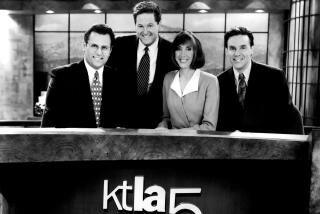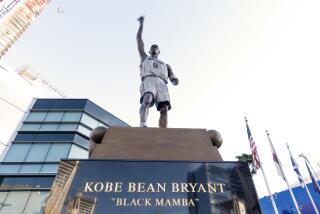HE’S BEAMING
- Share via
I’d like to mention a glaring oversight in Daniel Howard Cerone’s otherwise excellent piece on DirecTV (“This Couch Potato Blasts Into Space,” Jan. 8).
Since I helped create the monster by writing the first-ever commercial television program in Hollywood in 1947, when Paramount’s experimental W6XAO became KTLA, I have felt morally responsible for everything that has happened in television since, a mighty burden that sometimes keeps me awake nights when I could be watching Rush Limbaugh reruns.
My experience with TV programming began with a 10-inch RCA receiver in the days when the major entertainment on the tube consisted of KTLA’s test pattern. Some claim TV has gone steadily downhill since, but I disagree. There is much worthwhile, and with the new DSS system, as Cerone notes, it is delivered with superb picture and CD-quality sound, which Cerone found sadly lacking in the “annoying imperfections” of his cable-TV delivery.
I have been viewing cable programming for the last six years on a six-foot front-projection screen, with a 200-watt stereo amplifier, and usually the imperfections I detect are my own fault: ancient cabling, poor connectors, etc. The DSS pictures I have seen are only minimally better.
But Cerone has overlooked something more important: standard satellite transmission, to a full-size dish. At the moment, 27 satellites are available to me, a minimum of 24 channels each, which adds up to 648, and with compression the number can increase tenfold. I receive all the networks, in every time zone , every football game--if I wish to pay--and even his beloved MTV, not to mention my beloved KTLA. And much of the programming is free.
The picture is the ultimate: 425 lines of resolution, exactly the same as DSS, state of the art until high-definition TV comes along--any minute now.
But I can’t get the Raiders’ home games either--thank God.
MELVILLE SHAVELSON
Santa Monica
More to Read
The biggest entertainment stories
Get our big stories about Hollywood, film, television, music, arts, culture and more right in your inbox as soon as they publish.
You may occasionally receive promotional content from the Los Angeles Times.










